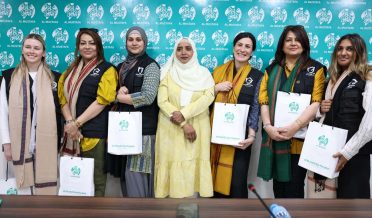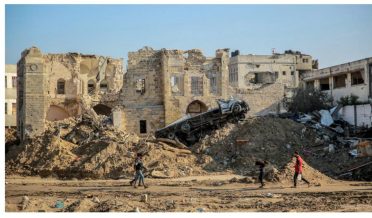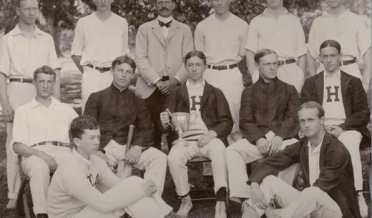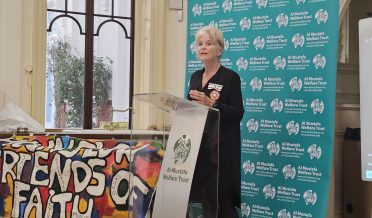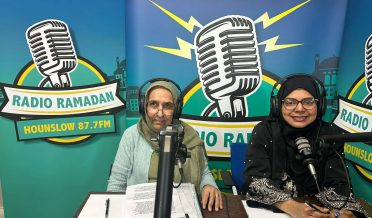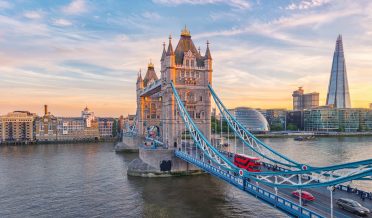The Afghan Factor

Afghanistan is a non-coastal / landlocked country situated in Southern Asia bordering Tajikistan, Turkmenistan, Uzbekistan, China, Iran, and Pakistan. This country has a controlled financial structure in which the federal control directs the financial system regarding the assembly and circulation of supplies. It is the 40th in the world regarding its size. Kabul is the capital and largest city of Afghanistan. Afghanistan is a member of the South Asian Association for Regional Cooperation. This country is a disreputably difficult place to run. Many herculean powers have failed to subdue this mighty and proud nation, so the nickname “Graveyard of Empires”.
Brief History of Afghanistan
Afghanistan has been a hub of diverse cultures due to its geographical position. Those who settled included the Persians and the Greeks. Many present-day towns are built on Greek fundamentals. A Buddhist civilization also stayed in this area, its rulers reigning in Bamiyan until the end of the 10th century. An Arab raid in the era brought Islam, this got stronger when the Turks gained authority in Iran, Afghanistan, and India. The Mongolian Genghis Khan also invaded this area in the late 13th century. Winding it up, in the 18th century, a Pashtun tribe under Aka Ahmad Shah Abdali defeated the then rulers and came up with its own large but unhinged empire.
In the 19th century, this country was caught up in the Anglo-Russian tug of war commonly known as ‘The Great Game’. To keep then Russia at the cove and protect its Indian colony, the imperial hand provided weapons plus an annual subsidy to Afghanistan’s rulers. The kingpin amongst them was Abdur Rahman Khan, this was in the late eighteen hundred, the consolidating strength behind the then Afghanistan. In 1893 the Durand line set the boundary with Imperial India but left the tribal areas disputed, leaving half in what is now Pakistan. Habibullah the son of Abdur Rehman Khan was generally of a liberal mindset and introduced a contemporary method of learning. During WW 1, the popular slogan came in the favour of independence.
The son of assassinated King Habibullah, Amanullah took over the throne and declared sovereignty. The Imperial rule was no more, and Afghanistan regained control over its foreign interaction’s. Amanullah started with land reform, worked to impart education to the masses, systematically imposed as well as regularized taxes, alongside gave Afghanistan its constitution. He did not envisage the possibility that his attempts to shift power from rural community elders and the religious founding led to rebellion and he was removed from power in 1938. Then came the famous Bacha-Yi-Saqao a Tajik and he seized power but was soon removed and executed by aka Nadir Khan, a Pakhtun and his empire remained till 1978.
Aka Nadir Khan allowed the countryside chieftains greater independence. He was martyred by a student in 1933. His 19-year-old son Mohamed Zahir succeeded him. In 1952 Zahir Shah’s cousin, Daoud, took control as Prime Minister. In 1963 Zahir Shah experimented to develop a lawful monarchy that lasted from 1964 to 1973. throughout this era intellectuals were allowed greater freedom, be it women or men.
In 1973 the King’s cousin, Daoud, staged a coup, proclaiming Afghanistan a republic and himself President. Cold War rivals, the USSR, and the US poured aid into the country.
During Daoud’s brief rule the country benefited from oil and gas revenues. Women’s rights were confirmed by Daoud, Kabul was now full of students and its university was a hotbed of political ideology i.e., both Communist and Islamic. Women and men studied together and met foreign teachers.
On 27 April 1978 in the Sawr Revolution Daoud was killed in a collectivist coupled with Afghanistan’s Peoples Democratic Party of Afghanistan (PDPA), but
PDPA was soon into internal conflict and the party split into many halves. One was Parcham who were expelled while the other splinter group, the Khalq headed by Noor Mohammed Taraki, took control. They from the beginning attacked Islam, ruled by dictate and enjoyed almost no well-liked hold.
Due to the across-the-board radical reforms sparked rebellions and troops defected to resistance groups. Then Russia doubled aid to Taraki’s administration, and the US aggressively supported the confrontationist segment of the Afghans. The then Russia thought that Uncle Sam would take advantage of escalating anarchy, President of the USSR sent in troops in December 1979 and thought that his troops will leave Afghanistan in six months.
Taraki was killed by party adversary Hafizullah Amin, who in turn was killed by Soviet troops thus paving way for Babrak Kamal to become head of the state. He was head of the Parcham party, overturning previous governments most detested policies and affirming loyalty to Islam.
The presence of Russian forces on Afghan soil had already led to a public rebellion. The Soviet military responded by destroying farming and stock so that to cut off supplies to the confrontation elements. Russian bombing of villages claimed nearly a million lives.
Soviet troops were increased to a number above 100,000, but this did not curtail resistance, rather it became intercontinental. The backbone of this resistance movement were Mujahidin groups supported by the USA who were exiled in Pakistan which were funded mainly by the Saudi Regime. The US poured in money and weapons to arm the opposition through international secret services. Gulbuddin Hekmatyar received most of the US money, intellectuals, were targeted in his murder campaigns. At the end 1980s, aid from the US and Saudi Arabia reached around $1 billion per year and approximately 5 billion dollars’ worth of weapons were given to the Afghan Mujahidin.
The Soviet saga in this land of the Afghans took 14,000 Russian lives, costing the USSR more than $5 billion annually. President Mikhail Gorbachev decided to withdraw. Dr Najibullah, the then chief of the Afghan Intelligence, was installed as Afghan Head of State. Soviet troops were withdrawing in February 1989. This armed conflict between USSR & USA on foreign soil had left 1.5 million Afghans dead, five million disabled, and five million refugees and the infrastructure were totally confounded.
In April 1992 the Afghan Mujahedeen took Kabul, Burhannaudin Rabbani was elected President, but the then Mujahidin were lacking unity and a harsh power thrash about started.
Now Abdul Rashid Dostum and Ahmad Shah Massoud rushed to Kabul to prevent a takeover of the capital city by Gulbuddin Hekmatyar and his supporters. There were four main groups, each with their special foreign supporters, who fought for control of the capital city, Kabul. The end of 1992 brought Kabul more devastation than ever, thanks to the actions of contending warlords, 5,000 people died and around a million were displaced. Other cities suffered similar wreckage. By the end of the year 1994, approximately 20,000 had died but still, the leaders of the warring factions and their foreign supporters refused to meet.
This was when a small group of religious students living near Kandahar objected to the activities of commanders scheming the region. With support from elements in the USA administration through Pakistan, they launched a movement of Islamic Jihad aimed at creating an Islamic state based on strict Islamic law. Taking Kandahar was their first victor, and it was home to their leader Mullah Mohammed Omar, this happened in November 1994. Taliban imposed order, collected weapons, tore down checkpoints and refused to take bribes. Their version of Islam according to many was hard to digest. Educated city dwellers, especially women, were worst affected. Later in their rule, they made alliances of expediency and took to torture, killings and violations of other human rights which they committed against civilians with the backing of their international supporters and this phenomenon spilled into their neighbouring country Pakistan with full-blown ramifications in the shape of terrorism of all kinds. Saudi Arabia provided funds, goods, and diplomatic support. Osama bin Laden, a wealthy Saudi, trained Arab Mujahidin recruits who came back to Afghanistan in 1996. The year 2000 gave the Taliban 90 per cent control of Afghan territory, this was recognized by Saudi Arabia, Pakistan and the UAE.
The US accused the Afghan Mujahedeen that they had given shelter to OBL of the Bin Laden family who was according to the CIA mastermind of the 1998 bomb attacks on US embassies. The US administration was certain that Osama bin Laden was the main planner of the 11/9/ 2001 attacks. Believing this the US government demanded from the Taliban to hand OBL to face US justice. Mullah Mohammed Omar the leader of the Taliban refused and on 27 October 2001 the international forces mainly US and British troops launched ‘Operation Enduring Freedom’. Approximately more than12,000 bombs were dropped in just a few weeks. On ground combating was done by Afghan Northern Alliance forces with the backing of the Coalition Forces. On December 16th Colin Powell declared and “We have destroyed al-Qaeda in Afghanistan, and we have ended the role of Afghanistan as a haven for terrorist activity.”
In the December of 2001 the Northern alliance and former King, Zahir Shah, were brought all together in Germany which resulted in the Bonn Agreement, this was a covenant between the victorious factions and this division incorporated warlords guilty of murder, extortion and destroying capital cities infrastructure and killing unarmed civilians in Kabul during the 1990s. A grand assembly was convened during the year 2002 which were headed by Hamid Karzai. In 2004 the new constitution of Afghanistan was recognized. Hamid Karzai was elected President, parliamentary elections were held, bringing in a greater fraction of women parliamentarians. July 2006 onwards International Security Assistance Force (ISAF) took over the task for security, from the US-led coalition in parts of Afghanistan and it was then that fighting and uprising intensified.
Afghanistan and Islam
The spiritual and religious influential have a multifaceted association with their Islamic religious passion and with other civil society groups in general. Throughout Afghan history, governments have required approval and legality, from the religious establishment. They however have the potential to weaken or even topple the government, which they currently did. These influential religious groups are more deeply involved with the Afghan society and can play a more central and positive role in the growth process regarding all walks of life. Considering the very reason that present-day young devout leaders are more effective at taking control of political developments and persuading the younger generation to get involved in the true spirit of Islam and its use in practical day to day chores. These present-day educated religious leaders speak of social equality and constitutional rights and of unification of humanitarian concepts with Islam and teachings of Holy Prophet Hazrat Muhammad (Peace be upon Him). They want to encourage peace, provide education, and serve the needs of their communities. Properly managed Islamic charities can be a great resource for reconstruction, but they have been blacklisted as linked to terrorism for since long.

The present setup of interim government must engage the young and educated religious leaders in the reconstruction of Afghanistan. It also needs to persuade them about the importance of state regulation of religious seminaries. The present leadership is working on different approaches of governance so as not to repeat the mistakes of the previous Taliban regime and want the present setup to be always involved in a broad-based consultative process for rectification of any faulty move which can spoil their international humanitarian image.
Although Afghanistan is a multi-ethnic tribal society, no group or faction, including the Taliban, is interested in a religious war. Unlike in Iraq and Arab states, religion has not been a source of major conflict in Afghanistan.
Saudi and Iranian Influence
Sunni and Shia Muslims have lived peacefully together for centuries. In many countries, it has become common for members of the two sects to intermarry and pray at the same mosques. They share faith in the Quran and the Prophet Mohammed’s sayings and perform similar prayers, although they differ in rituals and interpretation of Islamic law.
When Imam Khomeini took over, Iran began a tryout in Islamic rule, He tried to encourage additional Islamic restoration, emphasizing Muslim unity, but supported groups in Lebanon, Iraq, Afghanistan, Bahrain, and Pakistan that had specific Shia agendas. Muslim Brotherhood and Hamas accepted his success but did not accept him as a religious head, to make evident the depth of sectarian worries.

Saudi Arabia has a sizable Shia minority of roughly 10 per cent and millions of Sunni Muslims known as Wahhabis that is opposed to Shia Islam. The change of Iran into a Shia power after the Islamic revolution in Iran, compelled Saudi Arabia to speed up the spread of Wahhabism. This phenomenon revived a very old sectarian rivalry over the true understanding of their religion Islam. The sectarian violence that has occurred in the region and across the Muslim world since 1979 can be traced to Saudi and Iranian sources.
Saudi Arabia backed Iraq in the 1980 to 1988 war with Iran and sponsored Sunni militants in Pakistan and Afghanistan who were suppressing, and slaughtering Shia activities inspired or backed by Iran.
Current Situation and way forward
An agreement was signed in February 2020 between the U.S. and the Taliban that paved the way for the first direct talks between the Taliban and representatives of the Afghan republic since 2001. The subsequent peace process sparked optimism for a political resolution to the four-decade-long conflict. The safety situation throughout Afghanistan remained dismal.
Most Afghans overwhelmingly wanted peace but also wanted to preserve the current constitutional system that includes and safeguards all kinds of human rights, but the Taliban have said little to reassure.
The ongoing insurgency compounds innumerable other challenges that make Afghanistan one of the frailest countries. Many new hurdles have caused both humanitarian and economic hardships in an area with severe poverty, food insecurity, and climate susceptibility. A successful political settlement is the surest path to addressing these innate obstacles.
We must promote a long-lasting peace process that leads to a country being stable enough economically and strong enough administratively and does not go into the same cycle of instability for themselves and the world in general. We must support and guide its government and its people to set up their way of life influenced by none but the Brave Afghans. We must help them to determine the likely essence of a supporting resolution during the evolving peace process.
To have a sustainable peace process, the situation should be all-encompassing, diplomatic, and representative. The peacebuilders should be from the common flock, and they should be given the power to establish harmony amongst the locals and to endow them at all levels of society, including all ages and gender. All the strategies for peace are nonviolent and long-lasting.
All the community-level disputes should be resolved, and a long-lasting dialogue process is inculcated for everlasting peace. For the education system, peacebuilding and conflict resolution should start from the grassroots level. Masjid sermons and religious gatherings should be used to teach peace and interfaith harmony.
In Afghanistan, the stakeholders must strengthen the rule of law by increasing information about their rights and bringing in stronger connections between the civil society and institutions enabling admittance to justice.
A couple of months after the Taliban took control of this country, Afghanistan is in a neck-breaking situation, trying to handle economic and humanitarian predicament and the management has been made almost impossible by discontinuation of international aid and the holding of Afghanistan’s foreign exchange reserves by the international community and awarding of other sanctions.
Taliban have articulated their desire that the international community will recognize the new Taliban government of Afghanistan and have taken the initial steps sought after by the international community for their recognition. But at the same time, the group has done very little to show its eagerness to meet the conditions put forward by the international community. We hope and pray that a peaceful long-lasting solution comes into life in this country of brave people.
Province and their names Afghanistan is divided into 34 provinces. The provinces of Afghanistan are the primary administrative divisions. Each province encompasses several districts or usually over 1,000 villages.
1. Badakhshan 2. Badghis 3. Baghlan 4. Balkh 5. Bamyan 6. Daykundi 7. Farah 8. Faryab 9. Ghazni 10. Ghor 11. Helmand 12. Herat 13. Jowzjan 14. Kabul 15. Kandahar 16. Kapisa 17. Khost 18. Kunar 19. Kunduz 20. Laghman 21. Logar 22. Nangarhar 23. Nimruz 24. Nuristan 25. Paktia 26. Paktika 27. Panjshir 28. Parwan 29. Samangan 30. Sar-e Pol 31. Takhar 32. Uruzgan 33. Maidan Wardak 34. Zabul
System
Pashtuns are said to have developed the world’s largest tribal society. Local traditions convey that all Pashtuns are descendants of one beginning, even if there is no conformity about their ancestor’s name. Qays Abdurrashid, or Daru Nika, or Baba Khaled. Whoever the ancestor, the Pashtuns’ belief of belonging to one huge kinship group or family is the benchmark. Afghanistan is a multiethnic, tribal society. The population of the country consists of numerous ethnolinguistic groups and those are the Pashtun, Tajik, Hazara, Uzbek, Aimaq, Turkmen, Baloch, Pashai,
Nuristani, Brahui, Qizilbash, Pamiri, Kyrgyz, Sadat, and others. The Pashtuns make up between 40 per cent and 50 per cent of the population. Tajiks account for about 25 per cent, while Hazaras and Uzbeks are about 9 per cent each. Then there are a handful of other groups in smaller numbers. The Pashtun is also known as Afghan, an ethnic group whose language is Pashtu and follow Pashtunwali as their set of laws regarding their conduct. They comprise over 49 million people and between 350 and 400 tribes and clans. The Pashtun tribes are traditionally divided into four tribal confederacies, the Sarbani, the Bettani, the Gharghashti and the Kalani. Qais Abdur Rashid and his three sons Saṛban, Bēṭ, and Gharghax̌t as well as an adopted son, not directly adopted by Qais Abdul Rashid, therefore, the identity of Karlan himself and the man who adopted him, according to some books written on the history of the Pashtuns, is either unclear or controversial. There are several levels of organization of Pashtun tribes. The “tribe” is subdivided into groups, each of which is a khel and zai. A khel or zai is further divided into plarina, each of which consists of several extended families. A large tribe often has dozens of subtribes. The tribe is known as qawm in Pashtu and in most other languages in Afghanistan and Pakistan. This reflects the traditional view that ethnic groups and tribes are structured similarly. A sub-tribe or clan is khel in Pashtu, but it may also be called qawm, as any tribal unit may be seen as a tribe or sub-tribe. Demographics of Afghanistan The population of Afghanistan is around 40 million according to the latest figures for the year 2021. The nation is composed of a multi-racial and multilingual civilization, reflecting its position astride historic trade and invasion routes between Central Asia, Southern Asia, and Western Asia. Approximately 46 per cent of the population is under 15 years of age and 74 per cent of all Afghans live in rural areas. The average woman gives birth to five children during her entire life, the highest fertility rate outside of Africa. About 6.8 per cent of all babies die in childbirth or infancy. The average life expectancy of the nation was reported in 2019 at around 63 years. Dari and Pashto are both the official languages of the country. Pashto is widely used in the regions south of the Hindu Kush mountains and as far as the Indus River in neighbouring Pakistan. Uzbek and Turkmen are smaller languages spoken in parts of the north. Up to 89 per cent of the population practices Sunni Islam and belongs to the Hanafi Islamic law school, while 10–15 per cent are followers of Shia Islam, The remaining 0.3 per cent practice other religions such as Sikhism and Hinduism.
GDP of Afghanistan
The financial system of Afghanistan did steadily improve in the last decade due to the return of many wealthy ex-pat Afghanis, the transformation of the agricultural system, and the re-establishment of trade routes with neighbouring and regional countries. And then billions of dollars in worldwide assistance that came from ex-pat Afghanis and foreign investors saw this increase when there was more political reliability after the locals’ involvement in supporting peace and because of compassionate input from foreign economies in Afghanistan’s restoration. The nation’s GDP stood those days at about $70 billion with an exchange rate of $20 billion (2017), and the GDP per capita was near $2,000. Its imports were over $6 billion but exports were about $1 billion worth of authorized products mainly fruits and nuts with some minerals.

Afghanistan has around $1 trillion in proven untapped mineral deposits but remains one of the least developed countries in the world. Its unemployment rate is over 23percent and about half of its population lives below the poverty line. Many of the unemployed men join the foreign-funded militant groups or the world of crime, particularly as smugglers. But this mineral-rich country has since long required foreign investment to improve Afghanistan’s economy.
The previous regime’s foreign aid enabled corruption, and this played a role in the Taliban takeover. Afghanistan’s currency will decline due to the embargoes and freezing of their foreign currency reserves and will cause widespread inflation. As the banks reopen, people are rushing to convert their local currency into U.S. dollars, driving the value of their local currency down and pushing up prices of goods. Already, food prices have almost doubled, and fuel prices have increased by 75 per cent. Under the previous administration, their central bank would auction off $20 million U.S. dollars in cash on a weekly basis to prove their local currency worth relative to the dollar to the public. The Taliban are unlikely to rely on the previous administration’s tactics to secure its citizens’ confidence and prevent a run on the banks. The Taliban will struggle to replicate such moves, due in part to their choice of personnel. The new Taliban government selected Mohammad Idris as the new acting governor of the central bank who is inexperienced in handling such grave situations. Former Afghan finance minister suggested appointing existing experienced civil servants to replace officials who fled the country. In the short term, such a move would help Afghanistan ward off this financial disaster. It would also indicate gaining long-term credibility. This peak risk political and economic situation and the most difficult business environment, corporate default is likely.
Minerals
Decades of war meant that most resources remained buried. During the 1960s and 1970s, the USSR and its Eastern European experts went for wide-ranging surveys of the country’s geological resources. Their lies subterranean reserves of at least $1 trillion of untapped mineral resources, according to a report published by Afghanistan’s Ministry of Mines and Petroleum. The South Asian country of 38 million people is estimated to hold more than 2.2 billion tons of iron ore, 1.3 billion tons of marble and 1.4 million tons of rare earth minerals. The country requires a minimum of 10 to 15 years for the development of large-scale mining systems so that it becomes a major source of revenue.

Iron is the most abundant of Afghanistan’s valuable metals. The total iron ore reserve is estimated to be 2.2 billion metric tons. The Hajigak area in the mountainous Bamyan province has the largest iron ore deposit in the region with 1.7 billion tons of high-grade ore at 63-69 per cent iron. Afghanistan is also estimated to have 183 million tons of aluminium deposits found mainly in the Badakhshan and Kandahar provinces. Afghanistan also holds an estimated 2,698kg of gold deposits along two main gold belts in Badakhshan. The country yields an impressive 1.3 billion tons of beautiful Marble stone. Nangarhar province which borders Pakistan is known for its pink onyx marble which is among the most sought-after in the region.
Source of Income
An estimated 79percent of Afghans are dependent on agriculture and related agribusinesses for their livelihoods. Small-Scale Production of Bricks; Textiles; Soap and Furniture. It is also blessed with a wealth of natural resources, including extensive deposits of natural gas, petroleum, coal, marble, gold, copper, chromite, talc and rare earth metals. Revenues stood at 2.276 billion in 2017, GDP growth was 1.8 per cent in 2018 and 2.9 per cent in 2019. GDP per capita rank 177th in 2019 and GDP by sector, agriculture is at 23percent and industry at 21.1 per cent approximately. Afghanistan is rich in minerals and precious stones, much of it under-exploited because of the years of conflict. According to Afghan government officials, the mining industry is worth an estimated $1bn annually. Now, most of the extraction is small scale and much of it is done illegally.
Current Situation and Human Rights in Afghanistan
The situation in Afghanistan remains highly uncertain and changing rapidly. The security situation is extremely volatile and may become increasingly explosive at a short notice. The Taliban claims to be the honest and legitimate voice of the people, presenting themselves as a changed outfit and offering general pardon to opponents and there are shapeless promises of inclusivity and a pledge to allow women to study and work. After the Taliban took control, evidence points to a broad and sometimes brutal onslaught as they want to settle old scores and crush out the opposition. There is a big issue of human rights according to Amnesty International. The current situation in Afghanistan is a moment of computation, a moment when the human rights gains that the Afghan people have built over two decades is at the risk of total collapse. t The Taliban spokesperson says that they have learned and changed since they last held power 20 years ago but when will they start practising their changed domain. While the militant group has said it will establish a strong and effective administration for women under Shariah, but when. Lately, women have held protests demanding equal rights under the Taliban, with some beaten in the process. The government has announced that protests were banned unless they were approved ahead of time.

Then there are folks, the Taliban have deemed ineligible for amnesty. Human Rights Watch reported that Taliban forces advancing in Ghazni, Kandahar and other provinces had summarily executed detained soldiers, police and civilians alleged to have ties to the previous government.
Type of Government
Under the Afghan constitution, the president has power over the military and legislative affairs and serves as the head of state. The vice president has the second-highest political position obtainable in Afghanistan, vice-presidential candidates are appointed by the president then elected by direct popular vote.
The supreme court is the highest judicial branch of the government and head of the judiciary command. The supreme court is managed and based on the law by the chief of the supreme court, members, the high council of the supreme court, general administration, directorate of the judicial power, and some professional and administration sections. The nine justices on the tribunal are appointed by the president, with the approval of the Wolesi Jirga, the lower house of the nation’s legislature. The president selects one of the nine members to serve as chief justice.
The House of Elders primarily has an advisory role rather than a maker of law but also has some veto power. The House of People creates and ratifies laws as well as approves the actions of the president. The House of Elders has 102 members, 34 elected by regional legislatures, 34 elected by regional legislatures for shorter terms, and 34 elected by the president. The House of People is elected through the single non-transferable voting system.
Effects of War and Peace in Afghanistan
War has ceased to be a massively deciding event. Lasting solutions must be found for conflicts. More is needed than usual hard power, the use of which must be considered against other options. Security must include a wider range of sectors than the habitual military ones to create the stability that is needed for the introduction of a democratic system of governance, however, I do not agree to use of force for the purpose of obtaining peace by using ultimate horror as the means for it.
There is support for Afghanistan among Western countries, convinced of the importance to rescue it by stabilizing it. The leading role in the local peace making and stabilization processes is using an all-inclusive approach.
But history tells me that the role of Western countries in creating a positive situation for prosperity in Afghanistan should be once and for all left alone and the local Afghans should be encouraged and guided for their self-sustenance and freedom to acquire peace.

Afghanistan was and is one of the world’s most dramatic war zones in the last three decades. These decades of devastation done by the superpowers in one context, or the other has destroyed Afghanistan in every possible way, creating productive land for the active mixture of beliefs and fright starting in the late 1970s. The Soviet debacle led to cartelization of the illicit drug business and in the meanwhile, the Arab and other non-Afghan Islamist radicals strengthened their bases over there. The western power’s tacit belief was that the collapse of Afghanistan into chiefdoms did not merit worth worrying about. By the start of 2001, when the Taliban controlled most of the country. For many Western countries, the question of whether to join an alliance and take part in an armed intervention or not. By not participating was an option that would better serve their interests. For all the western powers economics was their top priority, they had an interest in stabilizing regions as it was important for their economies.
I believe that state-building is essential machinery of policies for preventing extremism and the rise of lopsided bullying. We should understand that western powers must support their political pledge to take combined action with the honest struggle for peace and prosperity. Economic prosperity leads to prosperity in every field and a very steady stride towards peace and harmony. Since wars are not won on the battlefield, the core factor is peace making and peacebuilding. War has ceased to be a massive deciding event. Lasting solutions must be found for conflicts inculcating peace. More is needed than traditional hard power, the use of which must be weighed against other options. Security must include a wider range of sectors than the conventional armed ones to create the stability that is needed to democratize. Peacebuilding is the channel in creating long-lasting peace.


